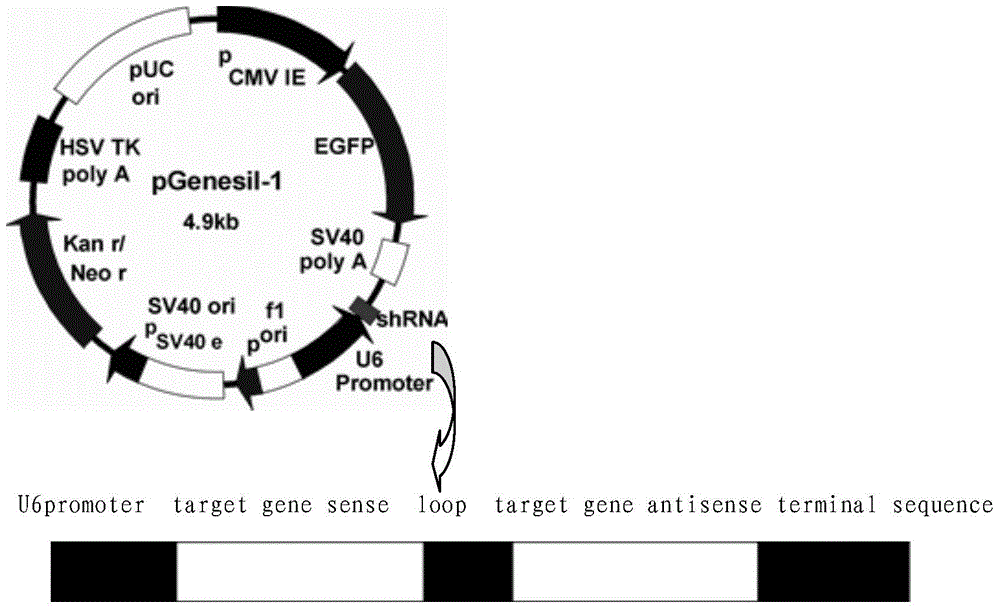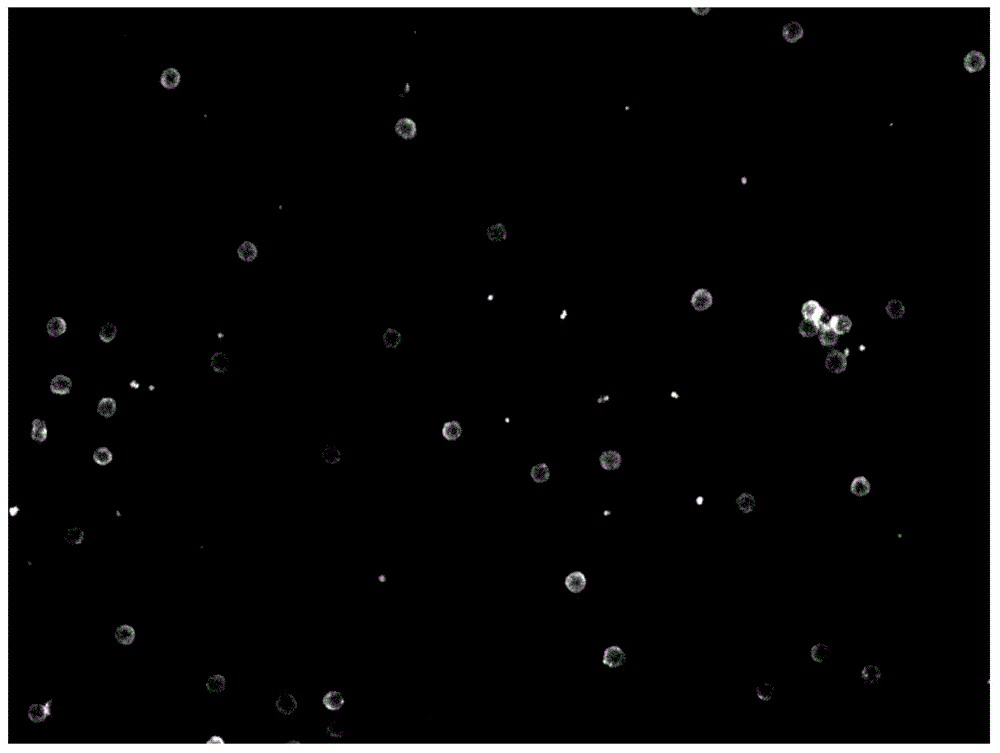Inference sequence capable of inhibiting diabetes mellitus type I CCR5 (CC-chemokine receptor 5) gene expression as well as recombinant vector and application thereof
A gene expression and recombinant vector technology, applied in the field of genetic engineering, can solve the problems of delaying the onset time and reducing the incidence of type I diabetes
- Summary
- Abstract
- Description
- Claims
- Application Information
AI Technical Summary
Problems solved by technology
Method used
Image
Examples
Embodiment 1
[0058] Example 1: Construction of pGenesil-1-CCR5-shRNA1 eukaryotic expression vector
[0059] 1.1 Required reagents
[0060] Restriction enzymes BamH I and EcoR I and corresponding Buffer, T4 ligase and its buffer, PCR product purification kit, and gel recovery kit were all purchased from TaKaRa Company (Dalian Bao Biological Engineering Co., Ltd.). Eukaryotic expression vector selection conventional RNAi vector
[0061] 1.2 Design, synthesis and screening of CCR5 specific shRNA.
[0062] In this experiment, the pGenesil-1siRNA expression vector provided by Wuhan Jingsai Company was used to produce shRNA. Expression of small hairpin RNA (short hairpin RNA, shRNA) in mammalian cells terminates transcription by adding a string (3 to 6) U. shRNA will be automatically processed into siRNA in cells, thereby triggering gene silencing or expression inhibition.
[0063] The sequence of Human CC chemokine receptor5 mRNA, complete cds (GenBank Accession No. U57840) is shown in SEQ ...
Embodiment 2
[0068] Embodiment 2: in vitro cell test
[0069] 2.1 Identification of pGenesil-1-CCR5-shRNA-1 inhibitory effect
[0070] The pGenesil-1-CCR5-shRNA-1 and pGenesil-1-CCR5-shRNA-2 and the negative control recombinant plasmids were respectively transfected with 200 μg / ml DEAE-dextran to mouse spleen T cells for 90 minutes, and the number of T cells was about at 10 7 about. 48 hours after transfection, the expression of CCR5 was detected by flow cytometry and RT-PCR. figure 2 It can be seen that siRNA1 can suppress the expression of CCR5 by more than 70%; siRNA2 can only suppress the expression of CCR5 by about 20%; therefore, the present invention screens out the pGenesil-1 with the best interference effect, that is, the most significant effect of inhibiting CCR5 expression. -CCR5-shRNA-1.
[0071] 2.2 Detection of cell cycle after T cell pGenesil-1-CCR5-shRNA-1 inhibits CCR5 expression
[0072] GFP transfected with 10 μg of CCR5-shRNA-1 plasmid collected under the above ster...
Embodiment 3
[0075] Embodiment 3: animal experiments
[0076] T cells transfected with pGenesil-1-CCR5-shRNA-1 and empty vector pGenesil-1 were sorted by flow cytometry to collect GFP positive cells, and untreated T cells were used as blank control, and 200 μl of PBS suspension was injected intraperitoneally Contains about 1×10 6 The T cells of the above-mentioned groups were adopted to the NOD.scid mice, the change of blood sugar in the NOD.scid mice of each group, and the insulitis were observed by tissue sections. The results found that the blood glucose in the control group was 10.7±2.1mmol / l in the fifth week, 9.8±1.3mmol / l in the empty vector group and 5.2±1.1mmol / l in the RNAi group, and the blood glucose in each group was 18.8±1.1mmol / l in the control group at the tenth week 3.1mmol / l, 19.7±2.4mmol / l in the empty vector group and 9.3±2.1mmol / l in the RNAi group; the RNAi group was significantly lower than the other two groups. One week after the adoption of T cells, it was found ...
PUM
 Login to View More
Login to View More Abstract
Description
Claims
Application Information
 Login to View More
Login to View More - R&D
- Intellectual Property
- Life Sciences
- Materials
- Tech Scout
- Unparalleled Data Quality
- Higher Quality Content
- 60% Fewer Hallucinations
Browse by: Latest US Patents, China's latest patents, Technical Efficacy Thesaurus, Application Domain, Technology Topic, Popular Technical Reports.
© 2025 PatSnap. All rights reserved.Legal|Privacy policy|Modern Slavery Act Transparency Statement|Sitemap|About US| Contact US: help@patsnap.com



